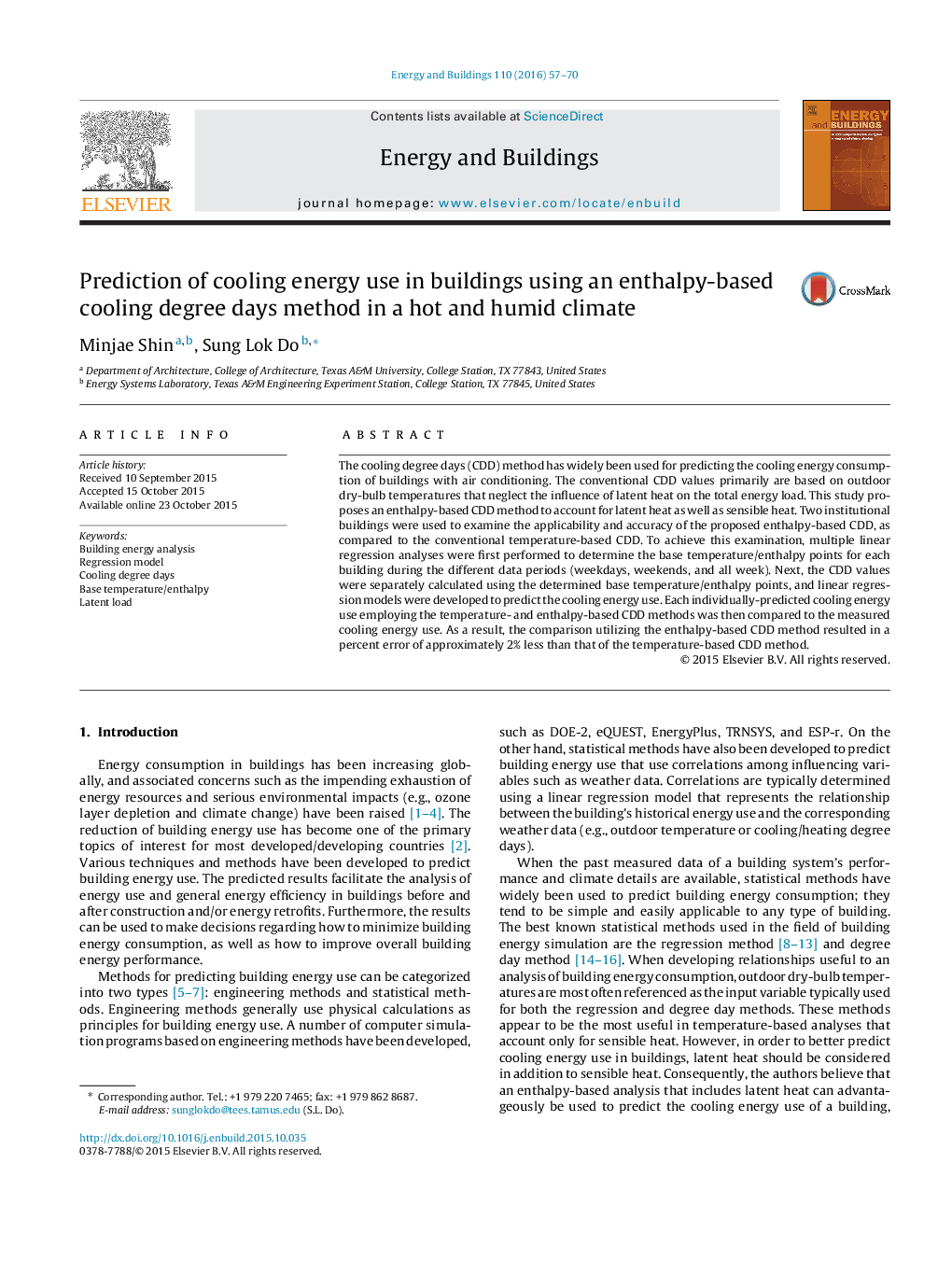| کد مقاله | کد نشریه | سال انتشار | مقاله انگلیسی | نسخه تمام متن |
|---|---|---|---|---|
| 262260 | 504023 | 2016 | 14 صفحه PDF | دانلود رایگان |
• Enthalpy-based cooling degree days (CDD) method to account for latent load.
• Examination for the applicability and accuracy of the proposed enthalpy-based CDD.
• Improvement of the cooling energy use prediction for a building.
The cooling degree days (CDD) method has widely been used for predicting the cooling energy consumption of buildings with air conditioning. The conventional CDD values primarily are based on outdoor dry-bulb temperatures that neglect the influence of latent heat on the total energy load. This study proposes an enthalpy-based CDD method to account for latent heat as well as sensible heat. Two institutional buildings were used to examine the applicability and accuracy of the proposed enthalpy-based CDD, as compared to the conventional temperature-based CDD. To achieve this examination, multiple linear regression analyses were first performed to determine the base temperature/enthalpy points for each building during the different data periods (weekdays, weekends, and all week). Next, the CDD values were separately calculated using the determined base temperature/enthalpy points, and linear regression models were developed to predict the cooling energy use. Each individually-predicted cooling energy use employing the temperature- and enthalpy-based CDD methods was then compared to the measured cooling energy use. As a result, the comparison utilizing the enthalpy-based CDD method resulted in a percent error of approximately 2% less than that of the temperature-based CDD method.
Journal: Energy and Buildings - Volume 110, 1 January 2016, Pages 57–70
